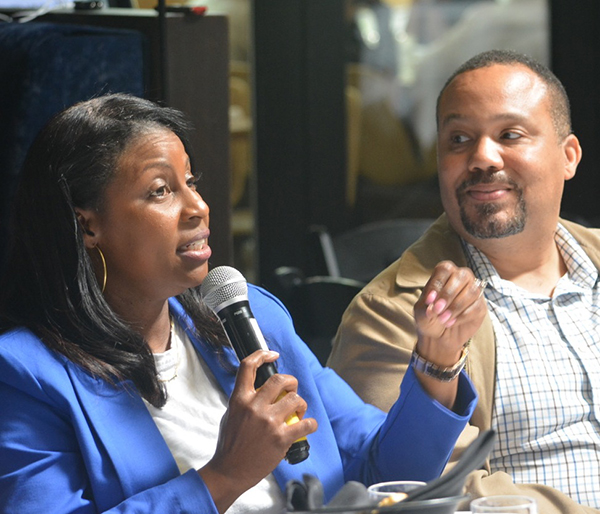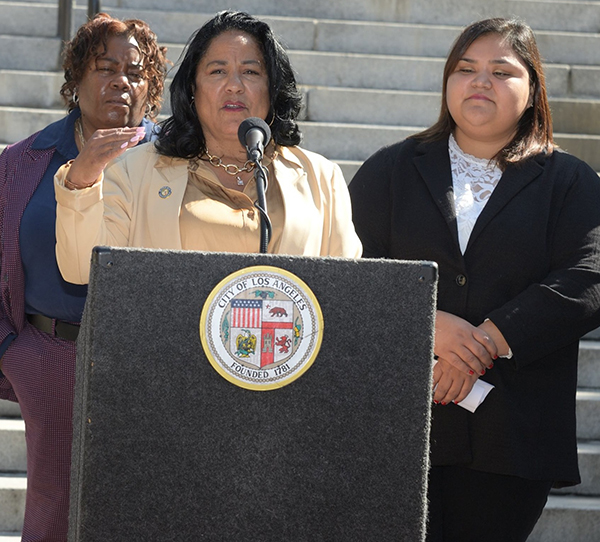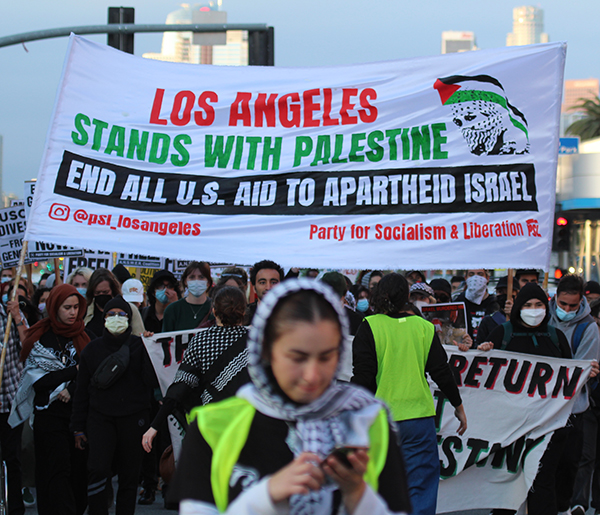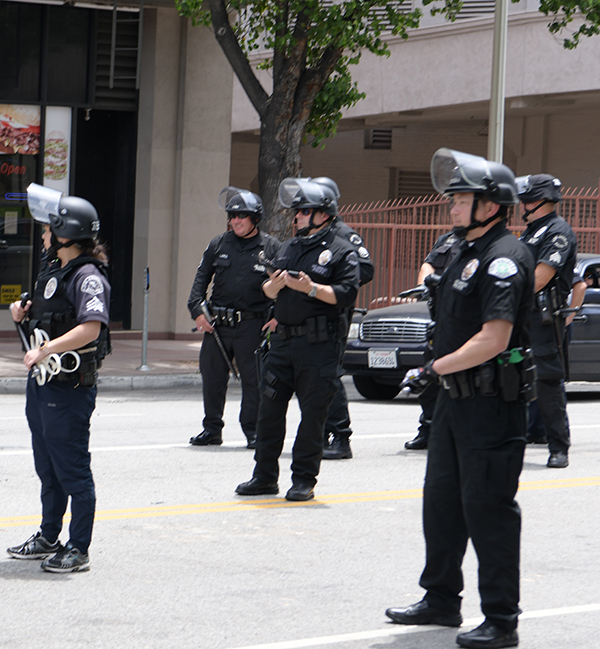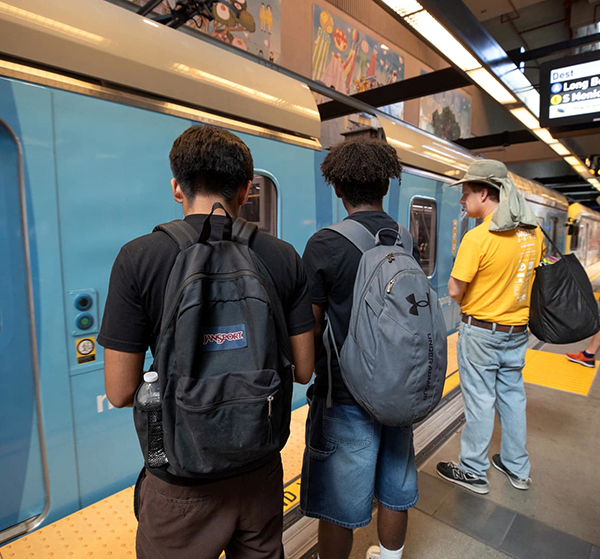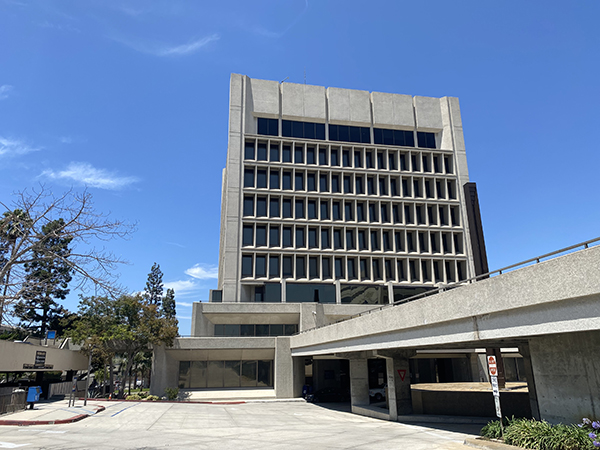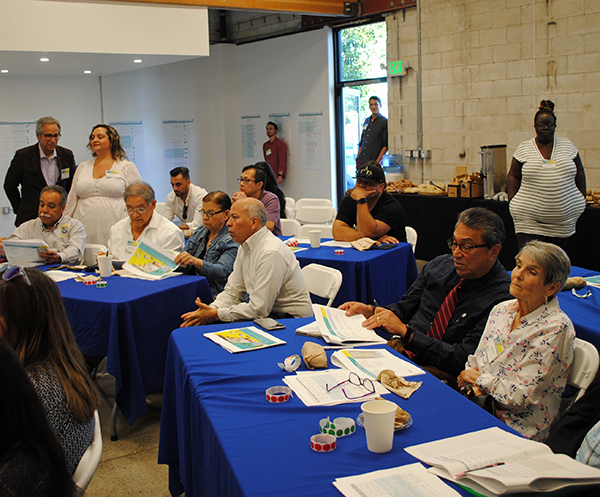By Alfredo Santana
Contributing Writer
PARAMOUNT — Infrastructure projects across multiple jurisdictions aimed to improve mobility of people and goods and reduce pollution garnered wide support among community members at an in-person evaluation gathering for members of the Community Leadership Committee overseeing the Long Beach (710) Freeway corridor between Long Beach and East Los Angeles.
Held at Horchatería Rio Luna June 22, the meeting served as a preview of projects that may be forwarded to the corridor’s task force for further evaluation to make the list of funding by the Metropolitan Transportation Authority’s Board of Directors next year.
Most of the 29 Community Leadership Committee participants attended the two-hour gathering in a room plastered with oversized sheets of paper describing 200 projects deemed qualified for vetting and eventual referral for funding.
Organizers had instructed Community Leadership Committee participants to pay attention to a set of 27 projects shaded with light blue, conceived to have larger spans of coverage and policies to meet the corridor’s visions and goals.
Among the projects is the community health benefit program.
The corridor-wide plan collected many green dots stickers showing support from most committee members, and from a handful of public participants in the wake of complaints for lack of plans to directly address respiratory and cardiovascular cases.
“We are suggesting a reduction of emissions and noise,” said Maria Reyes, a Long Beach resident who has led requests to address the impact diesel fumes and traffic have on schools and residents within 1.5 miles of the busy freeway.
Another highlight is the MTA’s Metro Micro-Transit Zone project that would offer on-demand services between Lynwood and Commerce to passengers who would be able to book rides in minivans using apps or making phone calls with 15-minute wait times.
Currently, the MTA offers the service with vans for up to 10 passengers in El Monte, Highland Park/Eagle Rock, Altadena/Pasadena/Sierra Madre, Northwest San Fernando Valley and UCLA/Westwood/Veterans’ Medical Center at $1 per ride.
Another project bundles a series of works to enhance access to the MTA’s A Line Del Amo Station with ramp redesigns, adding sidewalks, bike and crossing upgrades.
The latter, named Blue Line First Last Mile Plan Improvements was approved in 2018 by the MTA as part of a broader effort to make improvements in 22 stations from Downtown Long Beach to downtown Los Angeles.
The plan called for pedestrian upgrades within a half mile of each station, and for bike riding within three miles.
Keandra Cylear Dodds, the MTA’s executive officer of equity and race, said the agency’s main focus is to support projects geared to improve public transportation that have a positive impact on mobility and the residents’ wellbeing.
She said grants, incentives and other allocations from state and federal agencies will be vital to roll out many of the projects for the corridor.
“It’s very encouraging and exciting to transition to this evaluation stage,” Dodds said. “It’s about incentivizing use of cleaner vehicles and rewarding it. We are making sure these efforts are rewarded. For us it’s important. We think that is improving mobility and health,”
Other projects that earned many green dots included lighting of bus stops along the corridor, building of shade canopies, planting native trees, enhancing landscape features, and installing signals for bike riders, pedestrians and flashing crosswalks.
That said, not all large impact projects were fully embraced.
A controversial one is a plan to build an Amtrak rail track to connect Union Station in downtown Los Angeles to Long Beach.
The project earned two red dots for concerns underscoring the lack of detail on the tracks’ layout and the route’s impact on an area densely populated with homes, apartments and commercial units.
Such a project should describe the “potential routes that would be incorporated,” said Sinetta Farley, a community leadership representative from East Compton/ Rancho Dominguez.
At-large member Kevin Shin said descriptions provided in the augmented sheets are vague to throw in support to multi-billion dollar transportation projects.
Here LA co-director and meeting moderator Shannon Davis responded that the information printed on the displayed sheets, also available on the corridor’s project website, is all that there is available now.
“Need more specificity, detail on potential project consequences and outcomes,” Shin replied on a paper glued to the outsized sheet with the Amtrak pitch.
Projects spanning several jurisdictions are competing with smaller ones assembled by stakeholders like coalition of cities, and municipal transit agencies. Less formal plans concocted with input from public surveys and community hearings are also at stake.
Although the Clean Truck Program gathered many green dots, community members had previously questioned whether the $50 million fund already approved by the board to purchase zero emissions trucks would be equitable distributed among big fleet owners and individual contractors hauling cargo from the ports of Los Angeles and Long Beach.
The plan is key to eliminating diesel pollution, particularly in heavy emission areas such as San Pedro, Wilmington and communities bordering the freeway.
The Community Leadership Committee’s duty is to refer projects expected to foster clean air, help create economically sustainable communities and enhance quality mobility options along the 19-mile corridor stretch to the taskforce based on strong evaluation grades.
Paramount Mayor Isabel Aguayo attended to witness the dynamics of the evaluation exercise, and to check on at least six projects her city would benefit from if they are funded.
Although it was not highlighted, Aguayo said city residents hope the project to replace or restore a bridge on Rosecrans Avenue above the Los Angeles River makes it to the final list.
She said a proposal to invest in pedestrian and bike roads alongside the West Santa Ana Branch light rail has pulled a lot of attention. At a recent Town Hall meeting, 250 people were present to pitch names to rebrand the line, attesting to the importance of public transportation in the city.
“A lot of residents are excited about these projects,” Aguayo said. “People want projects that are productive. Those are big projects.”



